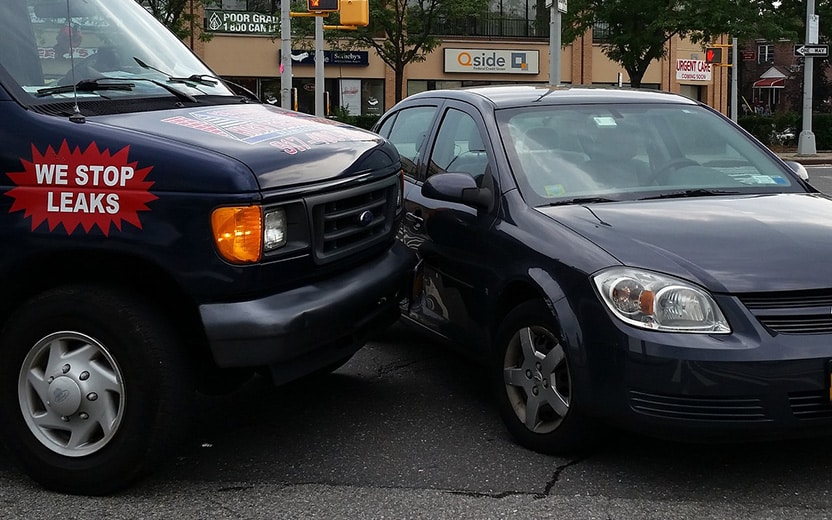Despite substantial progress in raising awareness about traffic safety, auto accidents are a harsh reality throughout Tampa Bay. According to the Association for Safe International Road Travel (ASIRT), 2.35 million Americans are injured in car accidents every year, with an additional 37,000 killed. The yearly monetary impact of these occurrences is also staggering, at a cost of over $230 billion. Sadly, the reasons these tragedies occur are far too numerous to list in their entirety. Examining the top auto accident causes can be an effective starting point in determining how to remain safe on Florida roadways.
Top Auto Accident Causes
5. Rain
Rain can be a serious inconvenience at any time, but it’s particularly concerning when it comes to driving. Naturally, it makes perfect sense that water makes roads slippery. Consequently, important functions like braking and turning become hampered.
According to the US Department of Transportation’s Road Management Program, on a national level, “The vast majority of most weather-related crashes happen on wet pavement and during rainfall: 73% on wet pavement and 46% during rainfall.” This led to an annual crash rate of 573,784 accidents caused by rain alone.
This is quite problematic in Florida, where we experience an average yearly precipitation rate of approximately 54 inches. The effects are easily reflected in the percentage of weather-related auto accidents.
4. Reckless Driving
“Reckless driving” is a very broad term. After all, any kind of reckless behavior that violates established road safety laws could be considered dangerous. The National Highway Traffic Safety Administration (NHTSA), however, explains reckless or dangerous driving as when “an individual commits a combination of moving traffic offenses so as to endanger other persons or property.” This is fairly self-explanatory.
Aggressive driving, improper lane changes, failure to yield and other reckless practices are just a few possible scenarios that lead to auto accidents. Sadly, these types of accidents are easily preventable, yet people engage in reckless driving every year. According to the AAA Foundation, these cumulative behaviors account for 56% of auto accident causes resulting in death.
Florida law states that “aggressive driving” involves two or more of the following infractions: going at least 15 mph over the speed limit, unsafe lane changes, following too closely (“tailgating”), failure to yield, passing incorrectly and “violating traffic control and signal devices.” The penalties for such behavior vary based on the severity of the violations.
3. Alcohol
It’s hardly surprising that alcohol is on this list – despite decades of education and public awareness campaigns. While it’s no secret that many people find this practice irresponsible (and actively avoid it), even one impaired driving accident is one too many.
According to the NHTSA, the United States saw 10,265 impaired driving deaths in 2015 alone. But this is hardly representative of the number of total violations. Mothers Against Drunk Driving (MADD) cites a survey indicating that “In 2013, 28.7 million people admitted to driving under the influence of alcohol – that’s more than the population of Texas.”
In Florida, the numbers are even grimmer. Reports from the Insurance Institute for Highway Safety (IHHS), showed that 1,032 people died due to car accidents in 2015. Of these, 607 had a confirmed blood alcohol content (BAC) greater than 0.08 percent. This accounted for 59% of car-related deaths. The death count makes Florida the third highest state in this category, behind Texas and California.
The Centers for Disease Control explains that 2.1% of Florida drivers voluntarily reported having driven after “drinking too much.” This exceeds the national average of 1.9%, with most deaths involving males aged 21 to 34.
2. Speeding
It goes without saying that the risk of an accident increases with speed. Driving faster reduces the amount of time a driver has to react. It also affects maneuverability and increases the distance required to stop.
The NHTSA reports that there were 9,557 fatalities related to speeding in 2015. The most recent data reported by the NHTSA, indicates that “speeding was a contributing factor in 28% of all traffic fatalities in 2014.”
These same statistics are echoed in Florida. According to the Florida Department of Highway Safety and Motor Vehicles, speeding resulted in 413 fatalities. Of these, 1,350 were “incapacitating injuries” and 21,710 were “non-incapacitating injuries.”
1. Distracted Driving
In the age of mobile phones, smartwatches and other mobile devices come a slew of problems for driving authorities. This technology gradually prompted states to enact distracted driving laws in hopes of curbing this behavior. While adding penalties and raising awareness has helped, distracted driving remains at the top of our list for auto accident causes in the U.S.
According to the CDC, distracted driving accounted for over 424,000 injuries and 3,154 deaths in the in 2013. However, mobile devices are not the root cause of all of these accidents. “Distracted driving” encompasses a wide variety of errors, such as failing to pay attention, looking away from the road or drivers removing their grips from the wheel
The death toll caused by distracted driving in Florida is staggering. In fact, an article by Patch reports that 2015 saw 45,000 car crashes caused by distracted driving. The most common culprits appear to be young people. Teenagers (ages 16 and 17) and young adults (aged 18 to 24) admit to breaking anti-texting laws at a rate of 46% and 48% respectively.
What should you do if involved in an automobile accident?
Florida drivers must remain diligent to ensure that one of these outside factors doesn’t contribute to an automobile accident. Whether stemming from one of these auto accident causes or not, it’s important to know your rights. If you’re involved in an accident, your first step should be to speak with an experienced Tampa Bay attorney. The attorneys at Kinney, Fernandez & Boire, P.A. will provide you with a complimentary case evaluation to determine your legal options.



